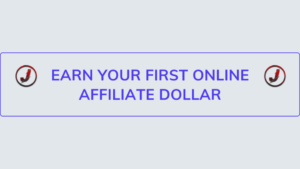Table of Contents
Make money through a blog by exploring a variety of popular methods that can transform your passion into a profitable venture. In this article, we’ll delve into effective strategies that will help you monetize your blog successfully.
1. Optimize Your Blog for SEO to Boost Earnings
Optimizing your blog for SEO is crucial to make money through a blog. SEO helps increase your blog’s visibility, driving more organic traffic, and ultimately boosting your earnings. By focusing on key SEO strategies, you can enhance your blog’s performance and reach a wider audience. Below are some essential techniques to help you get started.
First, understanding and conducting keyword research is fundamental. Keywords are the terms your audience uses to search for content. Identifying and targeting the right keywords can significantly impact your blog’s traffic and engagement. Let’s dive into how to effectively conduct keyword research.
SEO Services Recommendations
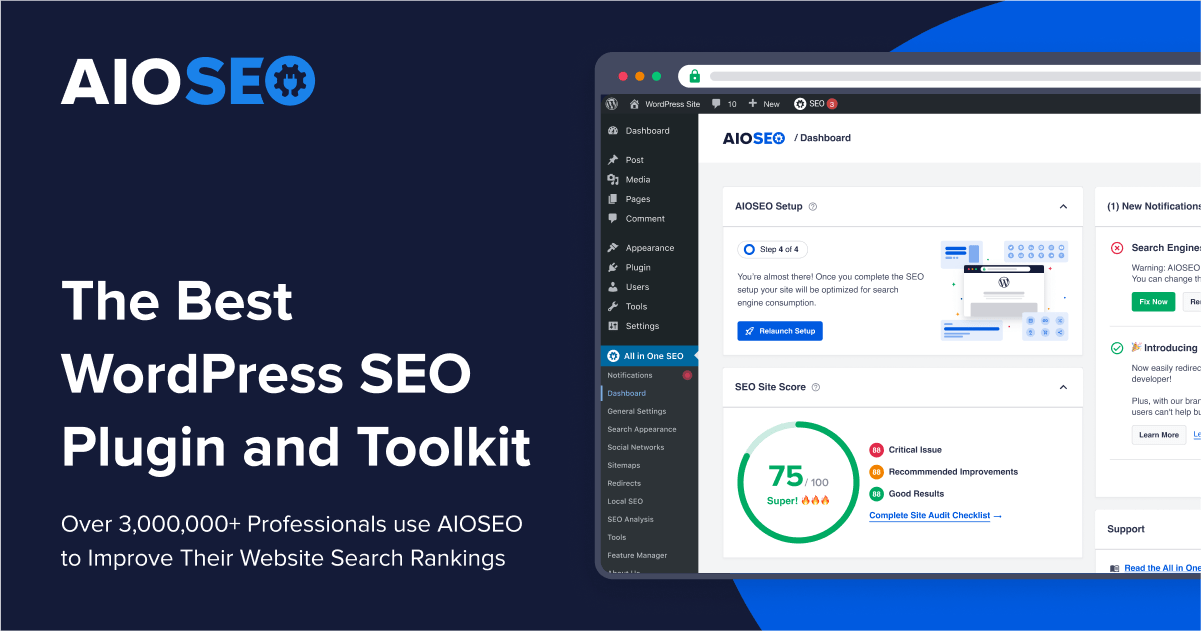 AIOSEO
| 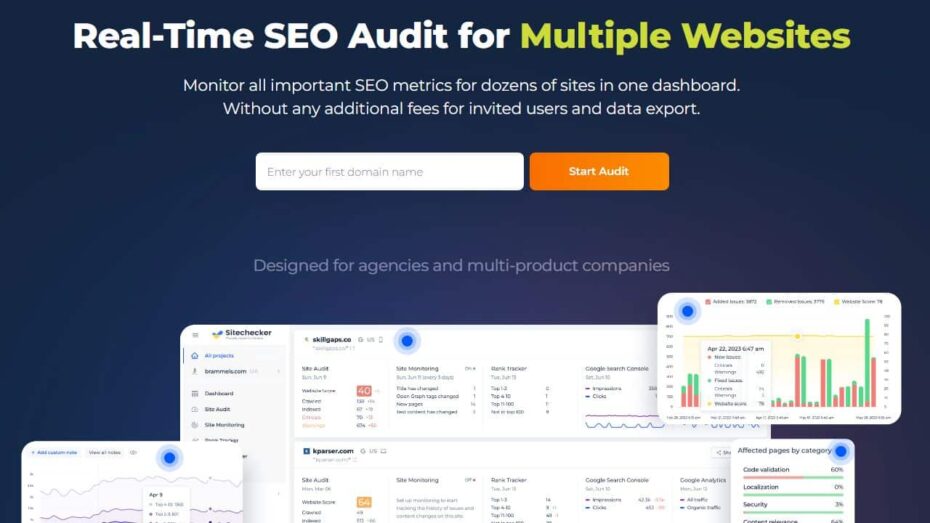 Sitechecker
| 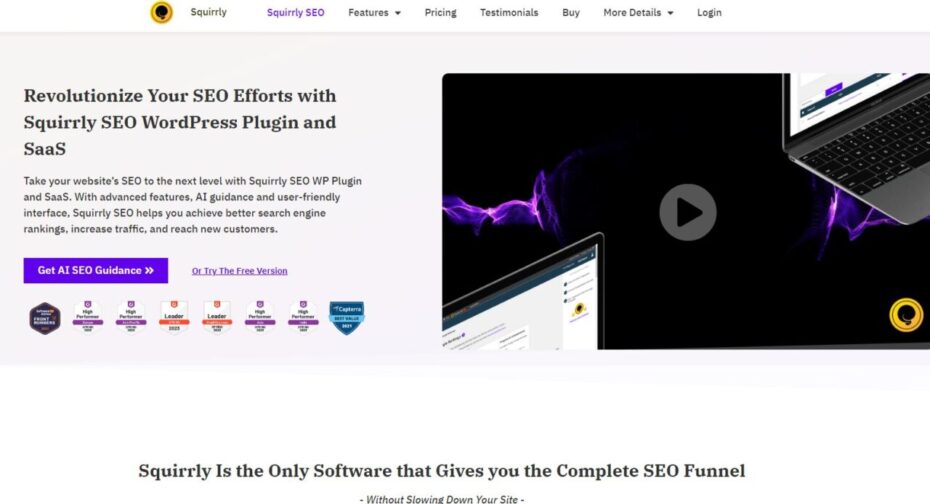 Squirrly
|
Conduct Keyword Research
Keyword research is the backbone of SEO. It involves finding the terms and phrases that people use to search for content in your niche. Start by using tools like SEOpowesuite, Ahrefs, or SEMrush to identify relevant keywords. Focus on long-tail keywords as they are less competitive and more specific to user intent.
Once you have a list of potential keywords, analyze their search volume and competition. Aim for keywords with high search volume and low competition. This balance helps your content rank higher in search engine results pages (SERPs), attracting more visitors to your blog.
Another essential aspect is understanding user intent. Ensure that the keywords you choose align with what your audience is searching for. Create content that answers their questions and meets their needs. This alignment boosts your blog’s relevance and authority, leading to higher engagement and conversions.
Implement On-Page SEO Techniques
On-page SEO involves optimizing individual pages on your blog to rank higher and earn more relevant traffic. Start by crafting high-quality, informative content that incorporates your target keywords naturally. Avoid keyword stuffing, as it can harm your rankings and reader experience.
Next, focus on optimizing your titles, meta descriptions, and headers. Use your primary keyword in the title and meta description to improve visibility. Headers (H1, H2, H3) should also include relevant keywords to structure your content and make it easier for search engines to understand.
Another crucial element is optimizing your images. Use descriptive file names and alt text that include your keywords. This practice helps search engines index your images, driving more traffic to your blog through image searches.
Build High-Quality Backlinks
Building high-quality backlinks is vital for improving your blog’s authority and search engine rankings. Backlinks are links from other websites that point to your blog. They act as votes of confidence, indicating to search engines that your content is valuable and trustworthy.
Start by creating shareable content that other bloggers and websites will want to link to. High-quality, in-depth articles, infographics, and original research are excellent for attracting backlinks. Additionally, reach out to influencers and industry leaders to share your content, increasing its reach and potential for backlinks.
Guest posting is another effective strategy. Write valuable articles for reputable blogs in your niche, including a link back to your blog. This practice not only builds backlinks but also exposes your content to a broader audience.
Finally, monitor your backlink profile using tools like Ahrefs or Moz. Regularly check for broken links and replace them with updated content. Disavow any low-quality or spammy links that could harm your blog’s reputation.
By following these SEO strategies, you can optimize your blog to boost earnings effectively. Consistently applying these techniques will improve your blog’s visibility, attract more organic traffic, and enhance your monetization efforts.
2. Leverage Affiliate Marketing for Steady Income
To make money through a blog, leveraging affiliate marketing is a proven method for generating steady income. Affiliate marketing involves promoting products or services and earning a commission for every sale made through your referral link. By choosing the right affiliate programs and crafting engaging content, you can significantly boost your blog’s earnings.
When implementing affiliate marketing, it’s essential to select programs that align with your blog’s niche and audience interests. This ensures that the products you promote are relevant and valuable to your readers, increasing the likelihood of conversions and maximizing your income potential.
Choose Relevant Affiliate Programs
Choosing the right affiliate programs is the first step in successful affiliate marketing. Start by identifying programs that offer products or services related to your blog’s content. Research reputable affiliate networks such as Awin, ShareASale, and CJ Affiliate, which provide access to a wide range of products.
Look for programs with competitive commission rates and reliable payment structures. Evaluate the quality of the products and the credibility of the companies you are considering. Promoting high-quality products from trusted brands will build trust with your audience and enhance your blog’s reputation.
Ensure that the affiliate programs offer adequate support and resources. This includes marketing materials, training, and a responsive affiliate management team. Having access to these resources will help you effectively promote the products and achieve better results.
Craft Compelling Affiliate Content
Creating engaging and informative content is crucial for successful affiliate marketing. Start by integrating your affiliate links naturally into your blog posts, reviews, and tutorials. Avoid overtly promotional language and focus on providing genuine value to your readers.
Write detailed product reviews that highlight the features, benefits, and potential drawbacks of the products you are promoting. Include personal anecdotes and experiences to make your content relatable and trustworthy. Use high-quality images and videos to enhance your reviews and provide a better user experience.
Consider creating comparison articles that evaluate multiple products within the same category. This helps your audience make informed purchasing decisions and positions you as an authority in your niche. Additionally, use call-to-action buttons and links to guide your readers towards making a purchase.
Track and Optimize Affiliate Performance
To maximize your affiliate earnings, it’s essential to track and optimize your performance. Use analytics tools provided by affiliate networks to monitor your clicks, conversions, and earnings. This data will help you identify which products and content are performing well.
Analyze the behavior of your audience to understand what drives conversions. Experiment with different types of content, such as blog posts, email newsletters, and social media updates, to see what resonates best with your readers. Adjust your strategies based on your findings to improve your results.
Continuously update and optimize your affiliate content. Remove outdated links and replace them with newer, more relevant products. Regularly update your reviews and guides to reflect the latest information. Staying current will keep your content valuable and engaging for your audience.
3. Create and Sell Digital Products
Creating and selling digital products is another effective way to make money through a blog. Digital products, such as ebooks, online courses, and downloadable templates, offer high-profit margins and can be sold repeatedly without the need for physical inventory. This approach allows you to leverage your expertise and provide valuable resources to your audience.
When developing digital products, focus on solving specific problems or meeting the needs of your readers. This ensures that your products are relevant and valuable, increasing the likelihood of sales and customer satisfaction.
Develop Ebooks and Guides
Ebooks and guides are popular digital products that can generate significant income for your blog. Start by identifying topics that are relevant to your audience and that you have expertise in. Conduct thorough research to provide in-depth and accurate information in your ebooks.
Create a detailed outline and structure your content logically. Use a conversational tone and include practical tips, case studies, and examples to make your ebook engaging and informative. Design your ebook with a professional layout and include visuals to enhance readability.
Promote your ebooks through your blog, social media, and email newsletters. Offer free samples or excerpts to entice potential buyers. Use compelling sales copy and testimonials to highlight the value of your ebook and encourage purchases.
Offer Online Courses and Webinars
Online courses and webinars are excellent ways to monetize your knowledge and provide valuable learning experiences to your audience. Start by identifying topics that are in demand and that you are passionate about teaching. Outline your course content and break it down into manageable modules or lessons.
Create high-quality video lectures, slides, and supplementary materials to support your teaching. Use interactive elements such as quizzes, assignments, and discussion forums to engage your students and enhance their learning experience. Offer live webinars to provide real-time interaction and personalized support.
Market your courses and webinars through your blog, social media, and email marketing. Highlight the benefits and outcomes of your course to attract enrollments. Provide early-bird discounts and exclusive bonuses to encourage sign-ups and create urgency.
Sell Downloadable Templates and Tools
Downloadable templates and tools are valuable digital products that can simplify tasks and provide practical solutions for your audience. Identify common challenges or needs within your niche and create templates or tools that address these issues. Examples include budget planners, social media calendars, and design templates.
Ensure that your templates are user-friendly and customizable. Provide clear instructions and examples to help your audience use them effectively. Design your templates with a professional look to increase their appeal.
Promote your templates through your blog, social media, and email campaigns. Offer free samples or trials to showcase their value. Use testimonials and case studies to demonstrate how your templates have helped others achieve their goals.
By leveraging affiliate marketing and creating digital products, you can make money through a blog effectively. These strategies provide multiple streams of income and allow you to monetize your expertise and content.
4. Utilize Ad Networks to Generate Passive Income
To make money through a blog, utilizing ad networks can be an effective strategy for generating passive income. By displaying ads on your blog, you can earn revenue based on impressions, clicks, or conversions. This method allows you to monetize your content without directly selling products or services. Let’s explore how to get started with ad networks and maximize your earnings.
First, signing up for popular ad networks like Hilltopads is a great way to begin. Hilltopads is user-friendly and offers a reliable source of income for bloggers. Additionally, exploring other ad networks can provide more opportunities and diversify your revenue streams.
Sign Up for Google AdSense
Google AdSense is one of the most popular ad networks for bloggers. It allows you to display targeted ads on your blog and earn money through clicks and impressions. To get started, sign up for an AdSense account and add the provided ad code to your blog.
After signing up, AdSense will automatically display ads that are relevant to your content and audience. This targeted approach increases the likelihood of clicks and revenue. Ensure that your blog complies with AdSense policies to avoid any issues with your account.
To maximize your earnings, regularly monitor your AdSense performance. Use the platform’s analytics tools to track your revenue, click-through rates, and other metrics. This data will help you understand which types of ads perform best and where to place them on your blog.
Explore Other Ad Networks
While Google AdSense is a great starting point, exploring other ad networks can help diversify your income. Networks like Adcash, and AdMaven offer competitive rates and can complement your AdSense earnings.
Each ad network has its own strengths and requirements. Research their offerings and choose ones that align with your blog’s niche and traffic levels. Applying to multiple ad networks increases your chances of approval and provides more options for ad placements.
Experiment with different ad networks to see which ones yield the best results for your blog. Track your performance across all networks and adjust your strategy based on your findings. This approach ensures that you are maximizing your revenue potential.
Optimize Ad Placement for Maximum Revenue
Optimizing ad placement is crucial for maximizing your ad revenue. Strategic ad placement can significantly impact the number of clicks and impressions your ads receive. Start by placing ads in high-visibility areas such as above the fold, within your content, and in the sidebar.
Avoid overcrowding your blog with too many ads, as this can negatively affect user experience and engagement. Use a balance of ad types, including display ads, native ads, and in-text ads, to keep your content visually appealing.
Test different ad placements and monitor their performance using A/B testing. This method allows you to compare different placements and identify which ones generate the most revenue. Continually optimize your ad strategy based on the data to achieve the best results.
5. Offer Sponsored Posts and Collaborations
Offering sponsored posts and collaborations is another effective way to make money through a blog. By partnering with brands and businesses, you can create content that promotes their products or services in exchange for compensation. This strategy not only generates income but also provides value to your audience through relevant and trusted recommendations.
To succeed with sponsored posts and collaborations, it’s essential to connect with brands in your niche, negotiate fair rates, and ensure authenticity in your partnerships. Let’s dive into how to achieve these goals effectively.
Connect with Brands in Your Niche
Connecting with brands in your niche is the first step towards successful sponsored posts and collaborations. Start by identifying companies that align with your blog’s content and audience. Reach out to these brands with a professional pitch that highlights the benefits of partnering with you.
Use platforms like LinkedIn, influencer networks, and blogging communities to find potential partners. Attend industry events and engage with brands on social media to build relationships and increase your visibility.
Create a media kit that showcases your blog’s statistics, audience demographics, and past collaborations. This document will help brands understand the value you bring and make it easier for them to decide to work with you.
Negotiate Fair Rates for Sponsored Content
Negotiating fair rates is crucial for ensuring that your sponsored posts and collaborations are profitable. Start by researching standard rates in your niche and consider your blog’s traffic, engagement, and influence when setting your prices.
Be transparent with brands about your rates and what they include. Offer different packages that cater to various budgets and needs. For example, you can provide options for single posts, series of posts, social media promotions, and more.
Don’t be afraid to negotiate. Brands often expect some back-and-forth when discussing rates. Be flexible but ensure that the compensation reflects the value and effort you put into creating high-quality content.
Ensure Authenticity in Collaborations
Ensuring authenticity in your collaborations is essential for maintaining trust with your audience. Only partner with brands and products that you genuinely believe in and that align with your blog’s values and content.
Be transparent with your readers about sponsored content. Clearly disclose any paid partnerships to maintain honesty and integrity. Authenticity builds trust and encourages your audience to engage with and act on your recommendations.
Create high-quality content that provides value to your readers, even when it’s sponsored. Focus on how the product or service can benefit your audience and incorporate personal experiences and testimonials to make the content relatable and trustworthy.
By utilizing ad networks and offering sponsored posts and collaborations, you can effectively make money through a blog. These strategies provide diverse income streams and allow you to monetize your blog while delivering valuable content to your audience.
6. Provide Freelance Services Through Your Blog
To make money through a blog, offering freelance services can be an excellent way to monetize your skills and expertise. By promoting your services directly on your blog, you can attract clients who are interested in your specific talents. This method not only generates income but also positions you as an authority in your field. Let’s explore how to effectively promote your freelance services.
First, it’s important to highlight your skills and expertise prominently on your blog. This will help potential clients understand what you offer and why they should hire you. Additionally, creating a portfolio of your work will showcase your capabilities and provide tangible proof of your skills.
Promote Your Skills and Expertise
Promoting your skills and expertise is crucial to attracting freelance clients through your blog. Start by clearly outlining your services on a dedicated page. Describe the specific skills you offer, such as writing, graphic design, or web development, and explain how these skills can benefit potential clients.
Use your blog content to demonstrate your expertise. Write informative articles, case studies, and tutorials related to your field. This not only showcases your knowledge but also helps with SEO, making it easier for clients to find you through search engines.
Include testimonials from previous clients to build trust and credibility. Positive reviews and feedback can significantly influence potential clients’ decisions. Make sure to update your testimonials regularly to reflect your latest work and achievements.
Create a Portfolio of Your Work
A portfolio is an essential tool for showcasing your work and attracting freelance clients. Create a visually appealing and well-organized portfolio page on your blog. Include samples of your best work, categorized by type or industry to make it easy for potential clients to find relevant examples.
Each portfolio entry should include a brief description of the project, the skills used, and the results achieved. If possible, provide before-and-after comparisons to highlight the impact of your work. Use high-quality images, videos, or links to demonstrate your capabilities effectively.
Regularly update your portfolio with new projects to keep it current. Highlight any high-profile clients or notable achievements to add credibility. An updated portfolio shows that you are active in your field and continually producing high-quality work.
Engage with Potential Clients
Engaging with potential clients is key to securing freelance work through your blog. Start by making it easy for clients to contact you. Include a contact form, email address, and social media links on your blog. Respond promptly to inquiries to demonstrate your professionalism and reliability.
Network within your industry to increase your visibility. Join online communities, attend events, and participate in discussions related to your field. Share your blog content and portfolio in these spaces to attract potential clients.
Offer free consultations or initial discussions to understand clients’ needs and propose tailored solutions. This shows your commitment to helping them succeed and can lead to more opportunities. Building strong relationships with potential clients can result in repeat business and referrals.
7. Host Membership or Subscription Programs
Hosting membership or subscription programs is another effective way to make money through a blog. By offering exclusive content to members, you can create a recurring revenue stream while providing additional value to your audience. Let’s explore how to set up and manage a successful membership program.
First, offering exclusive content to your members can incentivize them to join your program. This content can include in-depth articles, tutorials, or access to a private community. Next, setting up subscription tiers allows you to cater to different levels of commitment and budgets, making your program accessible to a wider audience.
Offer Exclusive Content to Members
Offering exclusive content is a great way to attract and retain members in your subscription program. Identify what type of content your audience finds most valuable, such as detailed guides, video tutorials, or behind-the-scenes insights. Create this content specifically for your members, ensuring it provides more depth and value than your regular blog posts.
Promote the benefits of your exclusive content on your blog and social media. Highlight the unique insights and access that members will receive. Use testimonials from current members to showcase the value and benefits they have experienced.
Consider offering limited-time access or free trials to entice potential members. This allows them to experience the value of your exclusive content before committing to a subscription. Ensure that your content is regularly updated to keep members engaged and satisfied.
Set Up Subscription Tiers
Setting up subscription tiers can help you cater to different audience segments and maximize your revenue. Create multiple tiers with varying levels of access and benefits. For example, you could offer a basic tier with access to exclusive articles and a premium tier that includes video tutorials, one-on-one consultations, and more.
Clearly outline the benefits of each tier on your subscription page. Use a comparison chart to help potential members understand the differences and choose the right option for them. Make sure the pricing for each tier is competitive and reflects the value provided.
Offer special promotions or discounts for annual subscriptions to encourage long-term commitments. This helps stabilize your income and reduces churn rates. Regularly review and adjust your tiers based on member feedback and market trends to ensure they remain attractive and valuable.
Use Membership Platforms Effectively
Using membership platforms can simplify the management of your subscription program. Platforms like Patreon, MemberPress, and Substack offer tools to manage memberships, process payments, and deliver content. Choose a platform that aligns with your needs and provides a seamless experience for your members.
Customize your membership platform to reflect your brand and make it easy for members to navigate. Ensure that the sign-up process is straightforward and secure. Use the platform’s features to communicate with your members, deliver exclusive content, and manage payments.
Regularly engage with your members through the platform. Use features like polls, live chats, and newsletters to keep them informed and involved. Provide excellent customer support to address any issues promptly and maintain a positive member experience.
By providing freelance services and hosting membership programs, you can make money through a blog effectively. These strategies offer diverse income streams and allow you to monetize your expertise while delivering valuable content to your audience.
8. Monetize with E-commerce and Dropshipping
To make money through a blog, integrating e-commerce and dropshipping can be a highly effective strategy. By setting up an online store, you can sell products directly to your audience, creating an additional revenue stream. Dropshipping, in particular, allows you to sell products without holding inventory, reducing overhead costs and simplifying logistics.
Setting up an online store involves choosing the right platform, selecting products to sell, and integrating e-commerce solutions that streamline your operations. This approach not only monetizes your blog but also enhances your brand’s value by offering tangible products to your readers.
Dropshipping Sites Recommendations
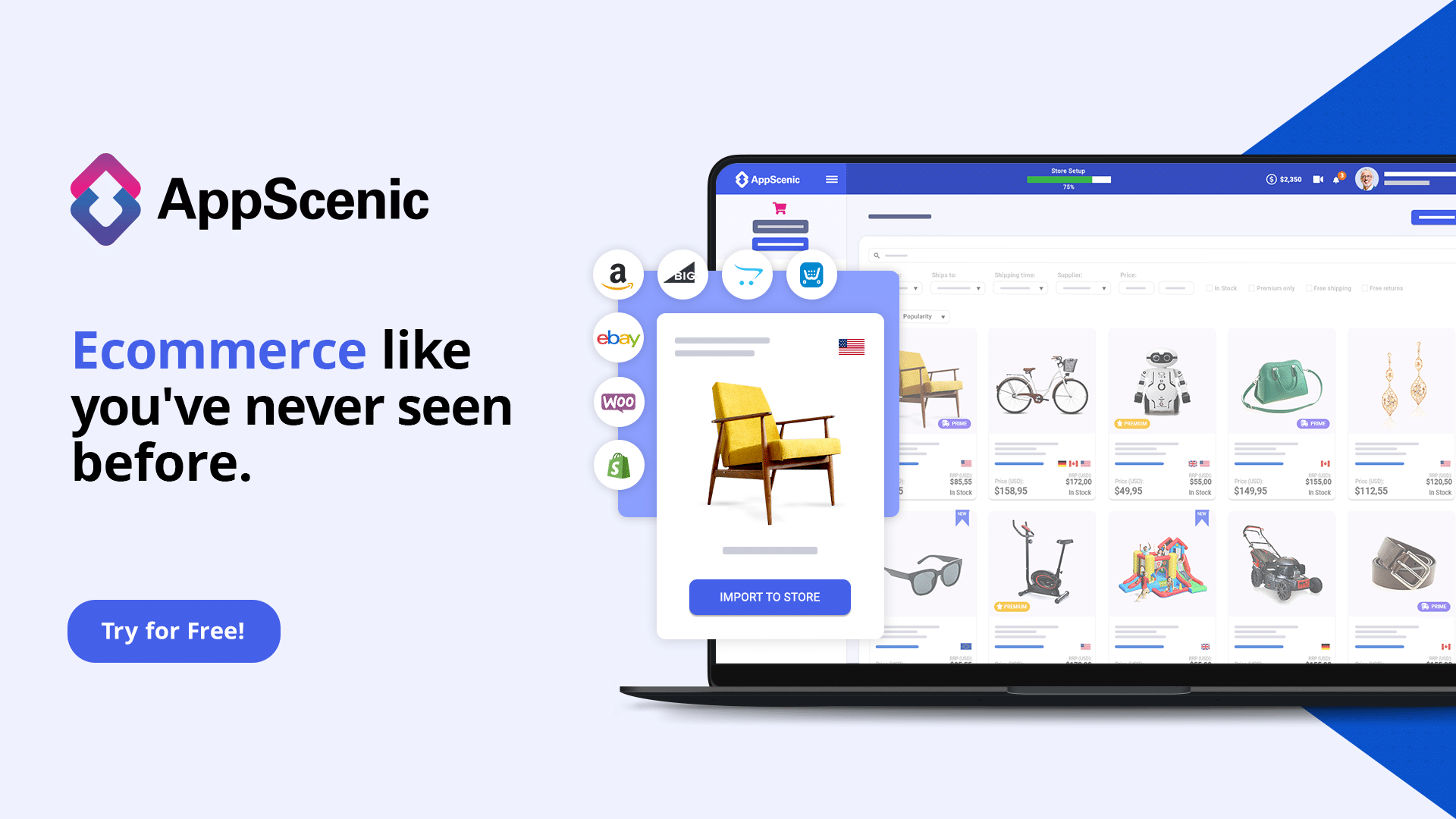 Appscenic
| 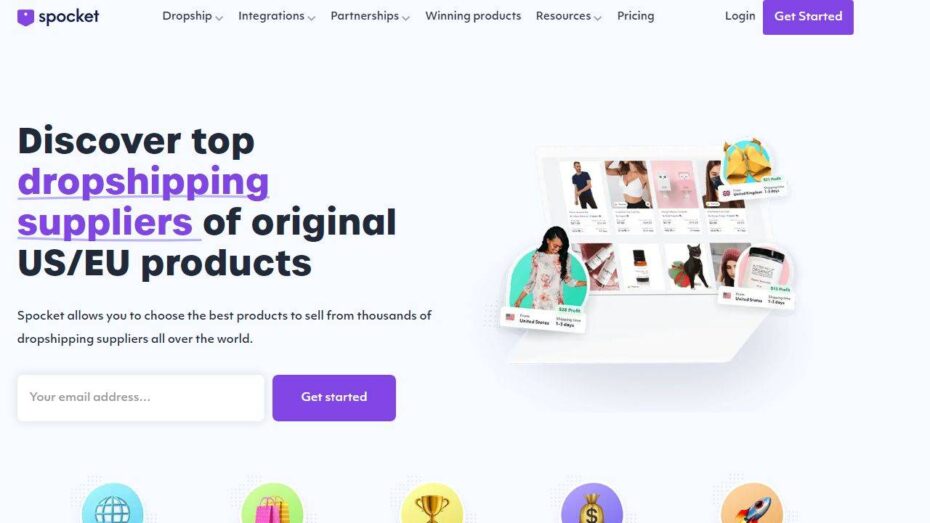 Spocket
|
Set Up an Online Store
Setting up an online store is the first step in monetizing your blog through e-commerce. Start by choosing an e-commerce platform that suits your needs. Popular options include Shopify, WooCommerce, and BigCommerce. These platforms provide the tools you need to build and manage your store efficiently.
Customize your store to reflect your brand’s identity. Use a clean, professional design that appeals to your audience. Make sure your store is easy to navigate, with clear categories and product descriptions. High-quality images and detailed product information are crucial for attracting and converting customers.
Integrate payment gateways such as PayPal, Stripe, or Square to offer secure and convenient payment options. Ensure that your checkout process is smooth and user-friendly to minimize cart abandonment rates. Regularly test your store’s functionality to ensure a seamless shopping experience for your customers.
Choose Products to Sell
Choosing the right products to sell is critical for the success of your online store. Start by researching your audience’s needs and preferences. Use tools like Google Trends, keyword research, and social media insights to identify popular products within your niche.
Consider selling products that complement your blog’s content. For example, if your blog focuses on fitness, you could sell workout gear, supplements, or fitness guides. Offering products that align with your blog’s theme enhances the overall value you provide to your readers.
Dropshipping is an excellent model for managing inventory. Partner with reliable suppliers who can fulfill orders on your behalf. This approach reduces the risk and investment associated with holding stock. Ensure that your suppliers offer high-quality products and reliable shipping to maintain customer satisfaction.
Integrate E-commerce Solutions
Integrating e-commerce solutions can streamline your online store operations and enhance the customer experience. Use inventory management tools to keep track of stock levels and automate reordering. This ensures that you can meet customer demand without overstocking.
Implement customer relationship management (CRM) software to manage customer interactions and data. This helps you provide personalized service and build long-term relationships with your customers. Use email marketing tools to send targeted promotions, newsletters, and follow-ups to engage your audience and drive sales.
Enhance your store’s functionality with plugins and apps that offer additional features. For instance, use live chat support to assist customers in real-time, or implement customer review systems to build trust and credibility. Regularly update and optimize your e-commerce solutions to keep up with industry trends and improve your store’s performance.










